


49 Shepperton Road, (Just over the causeway), Victoria Park. Phone 9334 3333 DL 6061 Success through customer service Company Philosophy
of a friendly and efficient company, trading with integrity and determined to give its customers the very best of service.” JohnHughes # 23 May2006FreeCopy Catholic magazine for families DISISCOVERY OVERY FUN for KIDS! Heaps of fun things to do with a nature theme - colouring in, quizzes, the Last Laugh - and find out what a Lazy Person’s Compost is all about. Maybe you can make it! Pages 12-13 Web OS Internet operating systems are working their way into the public realm - their arrival heralds a new era of computing. We take a look at what is on offer. Page15 Da Vinci Da PLUS: Our SPECIAL REPORT on how thousands of on lepers and orphans of HIV/AIDS are being cared and of HIV/AIDS are cared for in China by a remarkable man and the team of for in China a remarkable man and the team of helpers he built. You can he built. You can help them if you want. them if you want. Pages 7-9 7-9 D I S A P P O I N T M E N T S DISAPPOINTMENTS Meet Dr K AT E C H A L L I S KATE CHALLIS, Australia’s foremost exper t on Renaissance ar t, who , Australia’s foremost expert on Renaissance art, who is coming to Per th. She talks to is to Perth. She talks to discover y discovery about why people get angr y with about get angry with her when they find out Dan Brown’s her when find out Dan Brown’s Da Vinci Code Vinci is just fic tion. is fiction. PAGES 1011 Photo: CNS/Colombia Pictures
“That
It’s big - bigger than Ben Hur. SYLVIA DEFENDI reports on the Perth Oz Idol auditions 4-5
A new program available to schools doesn’t preach to youth about sex, it seeks to empower their choices 6
For 20 years they’ve had no-one to help them or love them - except a remarkable man and his helpers 7-9
TECHNOLOGY: Web-based operating systems are increasingly looking like the future for computers 15
No place to sleep
What’s a problem for a Perth family - paying the dental bill? Getting to the footy on time? Perhaps we can re-think the seriousness of own problems by looking at the problems of children in a country like Uganda.
■ By Carolyn Moynihan
In the gathering dusk, a long line of small figures stretches down the red dirt road leading into town. They are children, some clutching blankets around themselves against the oncoming night, others carrying a few belongings in bundles and packs.
At a time when children the world over would be eating under their own roof and preparing for sleep, these children are trekking away from their homes and families because it is not safe for them to stay.
"Every evening, as many as 40,000 children in northern Uganda hike for miles from their rural villages to shelters in town. These so-called night commuters are hiding from the Lord’s Resistance Army, a radical, religious paramilitary group that seeks to swell its ranks by abducting children while they sleep. If caught, their next march will be as Uganda’s youngest soldiers."
If caught, their next march will be as Uganda’s youngest soldiers."



Come along and join Father Jess Navarra on this escorted Pilgrimage tour visiting Fatima, Spain and ending in Rome.
Departs Perth 10th July 2006
Flying Singapore Airlines
Extension at
end of the Pilgrimage.

"Every evening, as many as 40,000 children in northern Uganda hike
Links
for miles from their rural villages to shelters in town. These so-called night commuters are hiding from the Lord’s Resistance Army, a radical, religious paramilitary group that seeks to swell its ranks by abducting children while they sleep.


EDITOR
Letters to: cathrec@iinet.net.au
JOURNALISTS JAMIE O'BRIEN jamieob@therecord.com.au
SILVIA DEFENDI sdefendi@iinet.net.au
BRONWEN CLUNE clune@therecord.com.au
MARK REIDY reidyrec@iinet.net.au
OFFICEMANAGER PENDING administration@therecord.com.au inc. sales/subscriptions
advertising@therecord.com.au
PRODUCTIONMANAGER
■ CARITAS AUSTRALIA directs funds to relief projects around the world. Caritas’s Africa Program coordinator, Simon Stroud, told discovery that Caritas has a major program operating in northeastern Uganda which provides refuge for children, reunification of families, and counselling among other services. Caritas has made Northern Uganda and Darfur, in Sudan, a major focus in 2005 and 2006 and an appeal is currently running. Contact Anne Fairhead on (08) 9422 7925.
■ Information on how to help the children in northern Uganda is also available by contacting the CATHOLIC MISSION Office in Perth on (08) 9422 7933 or by emailing catholicmissionpert h@bigpond.com. A speaker from the office on the Ugandan child soldier problem is available to visit schools or parishes and community groups. Catholic Mission’s director Francis Leong previously worked with child soldiers while stationed in Africa for several years.
This is the first caption in a photo essay, "Night Flight", by Bruno Stevens, published in the online version of the journal Foreign Policy. The eight pictures tell a story of pathos and stoicism that moves the heart and disturbs the conscience of the comfortable first world spectator.
What about us?
How little we in countries like Australia know of hardship and suffering.
The things that worry parents in America or Europe or Australia on an average day – being late to pick the children up from school, or finding the fees for a better education or getting their teeth

discovery May 2006 Page 2 Contents
DiscoveryCatholic magazine for families
PETER
ROSENGREN
CHRIS MIZEN
ADVERTISING
DEREK BOYLEN
587 Newcastle St, Leederville Post: PO Box 75, Leederville, WA 6902 Tel: (08) 9227 7080 Fax: (08) 9227 7087 Discovery is a bimonthly publication distributed through parishes and schools of the dioceses of Western Australia. This insurance product is issued by Catholic Church Insurances Limited ABN 76 000 005 210 AFSL 235415. The Product Disclosure Statement is available from our website or by phoning us. You should read and consider the Product Disclosure Statement before deciding to buy or renew this insurance product. HBT/CCI017/145x157 What an insurance company should be about. Community. While you can trust Catholic Church Insurances to look after your home and your family, it’s our relationship with the community that makes us unique. If you’re looking for a genuinely different kind of insurance company, one that cares for you and shares its profits with the community, you’ve found it. Call us today for an obligation free Building and Contents Insurance quote and affordable Personal Accident Insurance. 1300 655 003 www.ccinsurances.com.au
Experience The Pilgrims Road 2006 ★ Freecall 1800 177 788 For further information Cathie Rice Travelworld Lic No 9TA0495
production@therecord.com.au
★
Optional
the
#6W63947-6/4
31/3/062:51:37PM

straightened – are never matters of life and death. How lucky we are that the odds of physical harm to our children are remote, and that moral harm is something largely within our own control.
How free we are to protect them if we really want to: often it comes
down to no more than turning off the television set or refusing to give them a cell phone.
Yet real freedom demands more. The Ugandan children fleeing into the night remind us how necessary it is to train our children in understanding, patience, generosity,
forgiveness – all the virtues that make for peace. Without these, the lucky people of the world are quite useless to the others and our pity for their plight is wasted.
Moynihan’s full article, and a link to Foreign Policy's photos can be found at www.mercatornet.com

PRINCIPALSHIP
HOLY ROSARY SCHOOL,DERBY
Famous for its wide skies and unique landscape, which combine to produce stunning vistas, Derby, on the edge of King Sound, is located 2,354 kms north of Perth and 236 kms from Broome.
Holy Rosary School is a co-educational Catholic primary school catering for approximately 233 students from Kindergarten to Year Seven. The school was established in 1954 by the St John of God Sisters, who remained until 1988 when the De La Salle Brothers assumed leadership of the school. The first lay principal was appointed in 1994.
The school has a dedicated Literacy Coordinator and is committed to improving and raising the literacy and numeracy standards of the students. Holy Rosary participates in the Kimberley Literacy Program, Reading Recovery and First Steps (Mathematics) programs. A vibrant partnership also exists with the Derby Public Library.
Myclasses (IT) and Aboriginal Studies are important inclusions in the curriculum. Aboriginal Teacher Assistants provide both valuable assistance for students’ learning, as well as an important link between the school and family.
The Bluearth program (physical education) runs throughout the school and there are many extra curricula activities available for the students.
The successful applicant will be expected to take up the position at the commencement of Term 3, 2006.
Applicants need to be practising Catholics and experienced educators committed to the objectives and ethos of Catholic education. They will have the requisite theological, educational, pastoral and administrative competencies, together with an appropriate four year minimum tertiary qualification and will have completed Accreditation for Leadership of the Religious Education Area and Accreditation to teach Religious Education or its equivalent.
A current Federal Police Clearance/100 Point Identification Check and a WACOT membership number must also be included.
The official application form, Referee Assessment forms and instructions can be accessed on the Catholic Education Office website www.ceo.wa.edu.au Enquiries regarding the position should be directed to Helen Brennan, Consultant, Leadership Team, at sch.personnel@ceo.wa.edu.au or phone 9212 9268.
All applications, on the official form, should reach The Director, Catholic Education Office of Western Australia, PO Box 198, Leederville WA 6903 no later than 7 June 2006.

discovery May 2006 Page 3 MOTHERS Give your baby the best start in life. Breastfeed your baby while managing your fertility naturally and confidently without the use of chemicals. SIMPLY NATURALLY EFFECTIVELY Contact Billings WA for an Accredited Teacher near you Perth 08 9399 4394 Bunbury 08 9791 3696 Free call State Wide 1800 819 841 www.woomb.org Supported by the Commonwealth Department of Health and Ageing and administered by Australian Catholic Bishops’ Conference.
Check out discovery online www.therecord.com.au
Da Vinci Code resources available: books, CDs, DVDs - see Page 14
Children pack the Rural Focus Uganda shelter in Gulu as they bed down for the night to avoid kidnapping by members of the Lord’s Resistance Army, a brutal renegade para-military force operating in northern Uganda. Photos: CNS
The audition
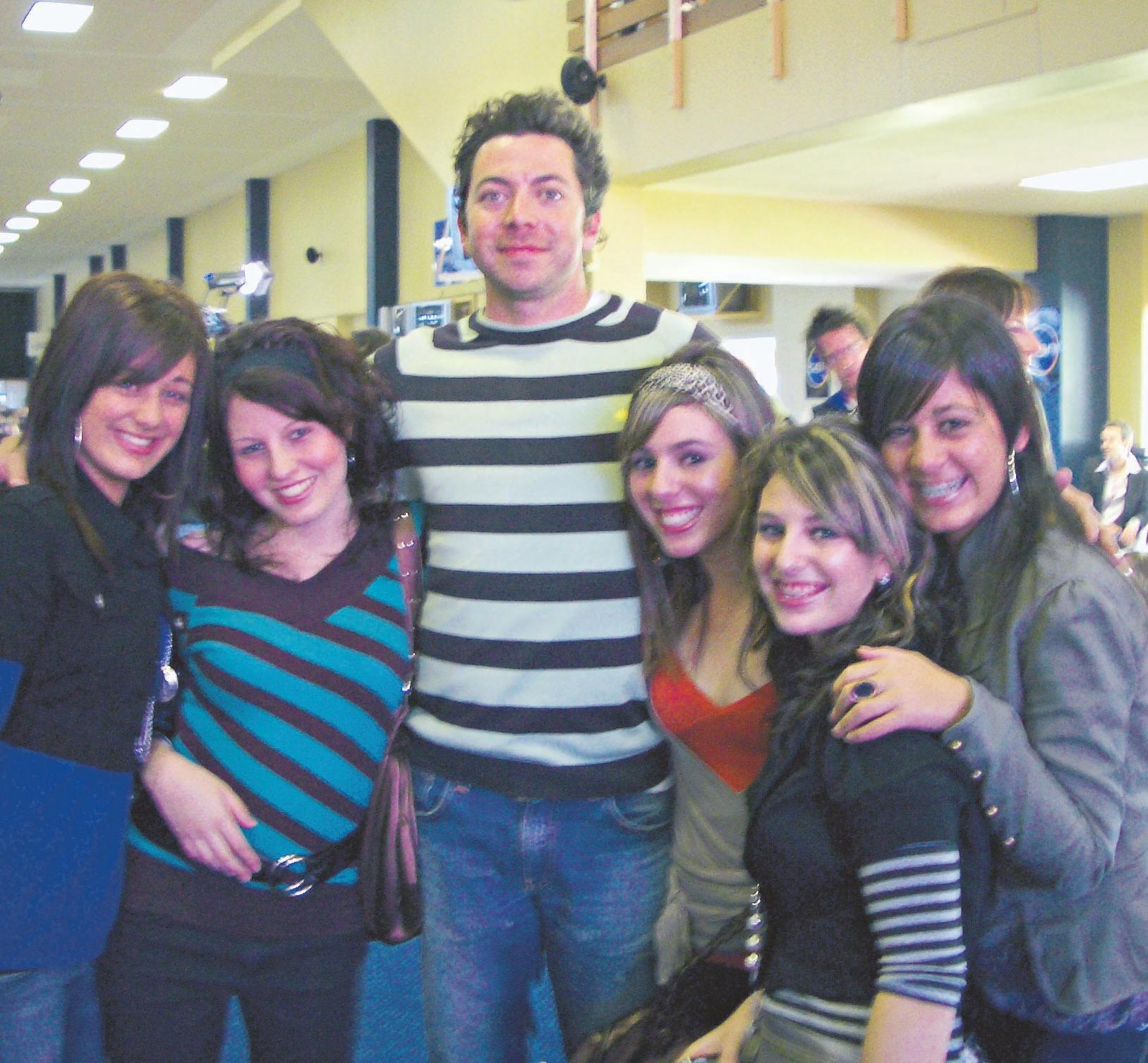


A few words to those shrewd investors who’ve secured a spacious new apartment in St Mary’s Cathedral Precinct.



Thank you and congratulations.
Such was the demand for the initial release of ten apartments in this prestigious inner-city location, that all have been snapped up. We extend our sincere thanks and congratulations to those who recognised the opportunity and moved quickly enough.
To those who missed out, we wish you better success when the next stage is released later this year. For further details and to register interest in the forthcoming release, simple call Grant Stewart on 0411 634 582.
discovery May 2006 Page 4
theVictorian
Australian Idol host James Matherson meets Christina Ferrone, left, Sarah Cosoleto, Lidia and Sandra Borgomastro, and Stephanie Ferrone at the Idol auditions held at Ascot Racecourse in Perth on Sunday May 7. Photos: Sylvia Defendi
Ticket to ride: Bradley Mein, 17, from Kelmscott Highschool, made it through preliminary rounds to audition before the on-screen judges. Other hopefuls, below, wait for their chance.
What’s it like to be part of an Oz Idol audition? discovery journalist SYLVIA DEFENDI attended the Perth auditions to see the highs, the lows and the talent....
 ■ By Sylvia Defendi
■ By Sylvia Defendi
Just over 2000 people came to Ascot Racecourse on Sunday, May 7, to brave the intense cold and impress Australian Idol television executives with their vocal, instrumental and even performative talents.
This time round, there weren’t many wacky dress-ups.
Steve Murphy, publicity manager for Australian Idol, believes this is because most people are starting to take the opportunities the show offers much more seriously.
“It’s definitely bigger than last year, there’s a lot more excitement, much more commitment, and not as much funny business,” he said.
Commitment was definitely the theme of the day, with people arriving as early as 2pm the previous day, 150 ‘camping out’ over night, and even mothers and babies turning up for a shot at fame.
Commenting on the show’s continued success, Deanne Matusik, Perth publicist for Network Ten, said “the show is always so intriguingly different. It’s a celebration of uniqueness. What we’re looking for is an interpretation of a song, not just karaoke. Auditioning is really like a job interview – it’s all about what makes you stand out.”
For Allira Wilson, 16, who had been waiting to sing for an hour, the experience could be summed up in four words – “it’s daunting yet atmospheric.”
Fifty-two possible Perth idols made it through to the second round of auditions with Marcia, Kyle and Mark.
In the words of Ms Matusik, “Hopefully Perth holds the key to the next Australian Idol!”
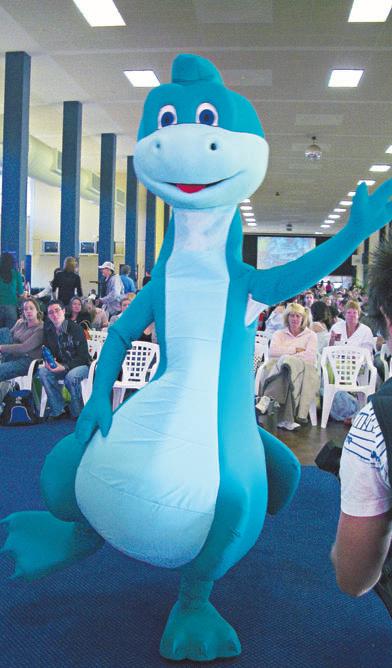
An Oz Idol audition is like nothing else - lots of colour, movement, action and high hopes to make it through the preliminary auditions for a chance to showcase talents in front of the onscreen judges most Australian TV audiences know of: Marcia, Kyle and Mark. Crowds of hopefuls keep themselves entertained as they wait their chance. Chris Bachman, at left, a fanatical fan of old TV cartoons rocked up in his dinosaur suit (Denver, the Last Dinosaur, which aired from 1988 to 1991). Meanwhile, Elise McKenna, at right, Melissa Ayres, Nancy Henderson and Rachael Mears presented for the day in Aussie attire, hoping for a spot on ‘The Unforgettables’ segment.


discovery May 2006 Page 5


 ■ By Mark Reidy
■ By Mark Reidy
One of the many attractions of the “Loving for Life” (LFL) sex education program is that it allows teenagers to discover for themselves what God wants for them.
The one-day, values-based course, which has been presented in a number of Perth Catholic high schools over the past 14 years, is designed to empower young people to make choices in their sexuality that are life-giving to both themselves and others.
Originally entitled, “Loving in the Nineties”, the program was developed by Billings Life in Melbourne in 1992 as a response to the number of couples they encountered who had little understanding of their fertility.
The course was designed to present 14-16 year olds with an overall Christian perspective of sexuality from fertility and foetal development to marriage.
In 2000 the course content was modified for WA by presenters Trish Beale, Tina Jack and Carol Anne Norris and renamed “Loving for Life”.
The adapted program has
received the support and guidance of Fr Joe Parkinson from the LJ Goody Bioethics Centre and was also given a visual upgrade to make it more appealing to young people when Carmen Court later joined the group.
Today the LFL team is made up of 20 trained facilitators who are presenting to an increasing number of schools each year.
“One of the reasons for the program’s success, according to Tina Jack, is that students are not lectured to about do’s and don’ts, but are encouraged to provide their own answers...”
Initial contact with a school involves information sessions for both parents and RE teachers so that there is a coordinated and consistent understanding of the information received by students.
On the day of the program, which is usually presented to either Year 9 or Year 10, students are divided into groups of no more than 12.
Males and females are in separate groups and a facilitator is delegated to each. These small, single-sex groups are designed to create an
Loving For Life Feedback:
“I learnt that what I really want for me is what God wants for me too!!”
“Why hasn’t someone told me this before now?”
“I thought abortion was just getting rid of some cells, but at three weeks I would be destroying the beating heart of a baby!”
“I thought it was OK to have sex with your boyfriend because that’s what everyone is doing!”
“I learnt that contraceptives can damage or destroy your fertility!”
“Now I feel as though I know where I am going.”
Help needed:
LFL’s Program developers are seeking funding to create two DVD’s, one on Foetal Development and the other on Abortion. Trish Beale can be contacted on (08) 9444 4861.
In Brief
Sex and media
Exposure to sexual content in the media makes a significant difference to teenage attitudes and behaviour, an American study has found. Kelly Ladin L’Engle and colleagues at the University of North Carolina studied 1011 Black and White adolescents from 14 middle schools in the Southeastern United States. They found media explained 13 per cent of the variation in intentions to initiate sexual intercourse in the near future, and 8-10 per cent of the variance in light and heavy sexual
behaviours, which was comparable to other influences.
-Journal of Adolescent Health, March, 2006
Women drinkers
Young British women are outdrinking young men – a pattern not found in other European countries, says Professor Moira Plant of the University of West of England. Dr Plant analysed data from a major international study, focusing on 12 European countries in 2004 and 2005 and the 18-24 age group. Young women no longer seemed to fear for their physical safety when they drank, but they did not realise

Relationship talk that empowers...








environment more intimate and less daunting than the classroom or a lecture theatre and consequently more conducive to exploring sensitive issues.
“The beauty of the course structure, according to Trish Beale, is that participants get to list their own personal desires for their relationships at the beginning of the day and are usually surprised at the end of the program to find that these are identical to those provided by Christian marriage.”
One of the reasons for the program’s success, according to Tina Jack, is that students are not lectured to about do’s and don’ts, but are encouraged to provide their own answers to discussion topics.
“We draw out from them what they really want for themselves”, she said, “so that they voluntarily verbalise what we want to say anyway.
they could be doing permanent harm to their own physical health, she said. “There are now young women…developing liver damage that in the past was not seen until the age of 60 or 70.”
-BBC News, March 23
Dante’s ‘Hell’ inspires interest in struggling students
Many teachers try to expand the cultural knowledge of their students, but few would dream of starting where one San Francisco social studies teacher has started:


lives is what God wants for them too.
“The role of the facilitator is to assist students in recognising the information that they already have within them.”
Topics discussed throughout the day include: foetal development, male and female fertility, sexually transmitted diseases, unplanned pregnancies, abortion, media, friendships, dating behaviour, marriage and a revelation of God’s plan for their ultimate happiness and health.
Facilitators are able to guide students in discussions about issues such as; the media’s presentation and promotion of sexual matters, the difficulties encountered when emotional and physical intimacy are not in union, the consequences of sexual relationships outside the protection of marriage, the medical risks associated with pre-marital sex and many others.
The beauty of the course structure, according to Trish Beale, is that participants get to list their own personal desires for their relationships at the beginning of the day and are usually surprised
with Dante’s “The Divine Comedy”. Callen Taylor, 30, returned to Mission High School last year after a summer spent studying Dante’s work in Italy. She was helped by a grant from the National Endowment for the Humanities, with the condition of promoting interest among students in the poet’s work. Mission High has mostly lowincome, minority students, many of them new immigrants. A group who had participated in summer programes along with students from wealthier backgrounds told Ms Taylor they had felt embarrassed by gaps in their knowledge about classical literature. So she started the Dante Club. At present, twelve
at the end of the program to find that these are identical to those provided by a Christian marriage.
Virtues such as love, commitment, faithfulness, security, respect, forgiveness and honesty are inevitably found in both lists, but the process ensures that the correlation is established by students, rather than told to them, Trish said.
The course has been conducted in Catholic schools to date, but the LFL team is receiving expressions of interest from other denominations and is looking to soon pilot its first program in an Anglican school.
Tina Jack believes that the success of LFL lies in the fact that participants are being empowered.
“We tell them at the beginning of the program that we are not there to tell them how to live their lives.
“They must make those decisions for themselves. We are simply providing the information, so that they can make good, life-giving choices.”
For bookings or further information contact Trish Beale on 9444 4861.
students meet with her for coffee on a Saturday morning, compare notes on the “Inferno” and learn how to interpret it. They also do field trips to plays, art galleries and libraries and are planning a trip to Italy. Even Ms Taylor can hardly believe that they have taken to the poem. But, she says, “It gives them confidence academically and when they get that, they want more.”
Several students said Dante had changed their lives in another way. Said one: “It makes me think…’If I do this, what circle of hell will I go to?’ Now I’m very careful in my decisions. I do believe in hell because I’m Catholic.”
-San Francisco Chronicle, March 20
discovery May 2006 Page 6
Why didn’t somebody tell me this before?: An increasing number of programs offer young people resources that will help them make decisions that avoid the hurts of the value-less society. Many who do the Loving For Life program offered in Perth are surprised to find that what they want for their
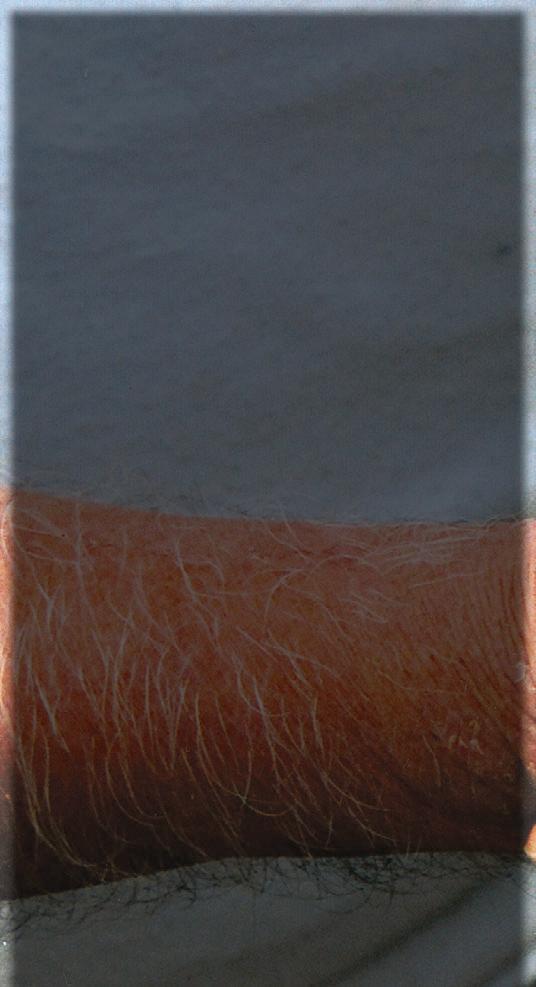
It's the sort of story you don't come across every day: over the last 20 years or so one man and the small band of helpers he has recruited have been building a network of centres for sufferers of leprosy throughout China. The people they care for suffer not only physical disfigurement, but blame, exclusion, rejection and violence because of their disease. The Record’s reporters DEREK BOYLEN and JAMIE O’B RIEN travelled to China to report on how Fr Luis Ruiz, now aged 92, has shown the lepers of China that someone, at least, is prepared to love them without limits. Their special two-part series of reports and photo essays appeared in the two most recent editions of The Record. You can help him if you want...

Love without Lovelimit s limits
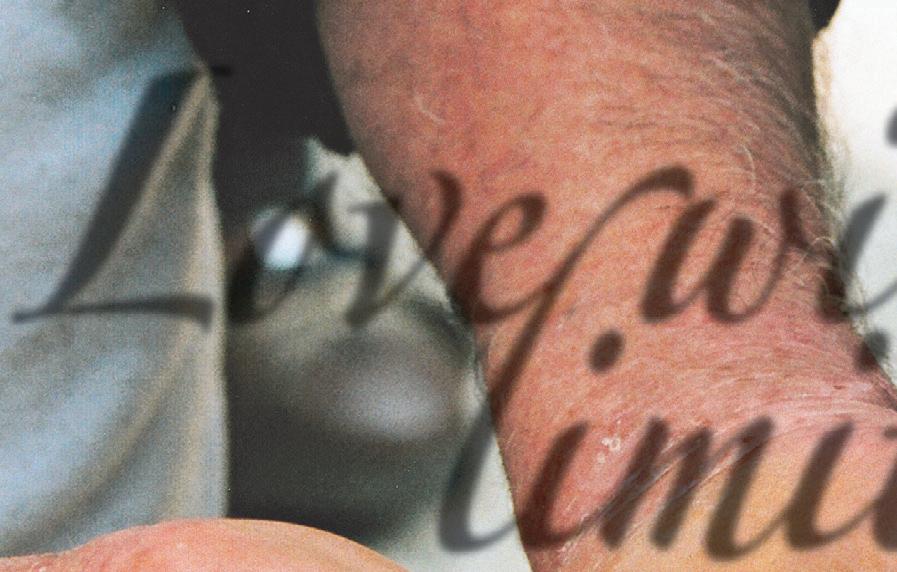

 ■ By Derek Boylen
■ By Derek Boylen
Thousands of lepers and hundreds of children dying of HIV/AIDS are cared for, on a daily basis, in southern China thanks to the compassion of one man.
Fr Luis Ruiz could pass for most of the world’s grandfathers.
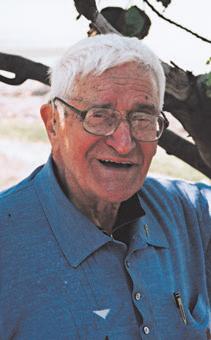
But few grandfathers can lay claim to having done as much for others as Fr Ruiz. He continues to house, clothe and feed thousands of lepers and children, has done the same at various times for tens of thousands of refugees, has travelled to crisis-spots in places like East Timor and some of the most needy places in Africa to help the poor, has built fruitful relationships between the Chinese government and the Church and, in the process, he has suffered typhoid, a coma and a heart bypass.
Today he still continues his remarkable and mostly unknown work from his headquarters in
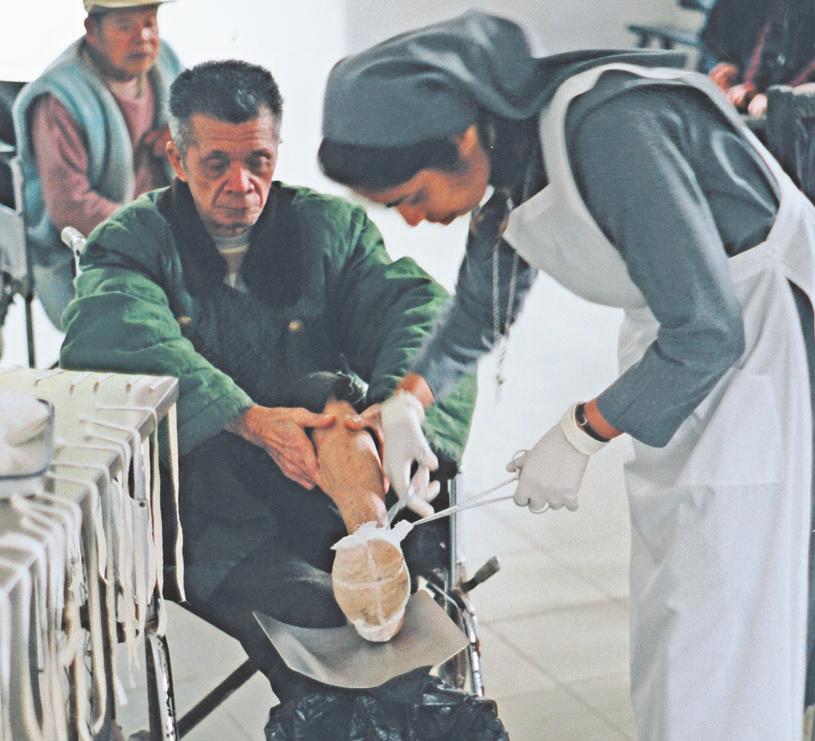
Macau, which is known as Casa Ricci Social Services and named after a famous Jesuit missionary to China in the 1500s.
Born Luis Ruiz on September 21, 1913 in Asturias, Spain, he joined the Jesuits a day before his seventeenth birthday in 1930.
It was ten years later in 1941 that Fr Ruiz began his missionary work in China arriving in August
of that year. Reassigned to work in the Philippines he didn’t get far. Still recovering from typhoid, his provincial told him to stop in Macau, a small Portuguese colony off the coast of China, until well. Fr Ruiz never left.
Within a month he began working with the refugees from mainland China,
Continued over
 The hand of Fr Luis Ruiz, right, cradles the stumps of a leper’s hands. The 92-year-old Spanish Jesuit has dedicated a lifetime to serving the poor and disadvantaged in Macau and China through the work of his social services organisation, Casa Ricci.
Photos: Derek Boylen and Jamie O’Brien
Fr Luis Ruiz SJ
The hand of Fr Luis Ruiz, right, cradles the stumps of a leper’s hands. The 92-year-old Spanish Jesuit has dedicated a lifetime to serving the poor and disadvantaged in Macau and China through the work of his social services organisation, Casa Ricci.
Photos: Derek Boylen and Jamie O’Brien
Fr Luis Ruiz SJ
discovery May 2006 Page 7
Sisters of Charity of St Anne nun Sr Lizzy cleans the wounds of a leprosy patient at Tai Kam, above and right, Fr Ruiz greets a patient in Bolou.
This is the work of the Church in China



Continued from page 7 Indonesia and Burma. His work with the refugees occupied most of his time in the following years, during which he baptised over 5000 people.
Until China reclaimed Macau from the Portuguese in 1999 it is estimated that Fr Ruiz helped to clothe, shelter and feed over 30,000 refugees.
“Life was intense during those times,” Fr Ruiz said.
Fellow Jesuit Fr Fermin Rodriguez SJ says Fr Ruiz “ has an intuition for where there is a real need.” While the tide of refugees slowed considerably after 1999, Fr Ruiz is not one for idle hands.
In 1985, at the age of 71, Fr
Ruiz was able to travel to the leprosarium on the island of Tai Kam. There were over 200 lepers and he was horrified at their living conditions. “There was no water, no electricity, their houses falling down.” Fr Ruiz immediately began sending financial aid to the lepers and soon, with the approval of the local government and health authorities, re-built the leprosarium. Health authorities in other regions saw the work being done in Tai Kam and started to invite his help with their leprosariums. At some of the leprosariums Fr Ruiz was the first visitor they had received for over half a century.
Up to this day, there is an

inherent fear of people with leprosy in China.
One leper on Tai Kam was left there by government authorities when we was captured on the streets with leprosy at the age of seven. He is now nearly 70. Lepers are left without parents, family or loved ones, abandoned to the care of strangers as crippled and wounded as themselves.
In the course of caring for the lepers Fr Ruiz has built 15 roads, 35 buildings, 17 schools for leper children, 5 bridges across rivers and 4 houses for religious sisters. He has provided 7 mobile clinics, 25 systems for clean drinking water and 21 systems for electricity. But most importantly


Sisters live vocation of love
■ By Jamie O’Brien
The work of three nuns has dramatically changed the lives of more than 60 victims of leprosy on a small island in China.
Sisters Omna, Lizzy and Elizabeth, from the Sisters of Charity of St Anne, have all come from Kerala, India, to work with the lepers of Tai Kam.
The island is situated about 25 kilometres from the Chixi district. The sisters assist the patients constantly, even when they are called at midnight.
Sr Lizzy, the oldest of the three, entered the Sisters of Charity of St Anne, together with Sr Elizabeth in 1980.
“This was the only sort of work that I was confident wanted to follow,” Sr Lizzy said.
Sr Omna, says she entered the congregation because she felt called and knew she wanted to be a missionary.
once or twice.
During the day, the lepers go about their own business like gardening and sewing.
The near-universal Chinese board game, Mahjong, is a popular pastime.
The average age of the lepers on
Tai Kam is now approximately 65.
The oldest man on the island is 94, and has been there since his early teens, and the youngest 43.
Some have been affected by the disease from as young as six years old. For most of Tai Kam’s patients, their lives on the island commenced some 50 or 60 years ago, when they were first diagnosed with the disease.
Originally the island had more than 500 lepers, but this number has slowly decreased.
By the time the sisters arrived eight years ago, there were just over 160. Today there are 79. But when it comes to leprosy discrimination is still a problem, as is fear.
Chinese doctors formally visit the island, but won’t approach any of the patients.
he offers the gentle, healing love of Christ. Now, at the age of 92, Fr Ruiz provides for over 100 leprosariums, thousands of lepers and their children, and has built an orphanage for HIV/AIDS children. Looking back, he has no doubt about how it all came together.
“God chose Ruiz for this work,” says Fr Fermin with a kind of reverence you save for conversations in church in case God might be listening.
Fr Luis Ruiz SJ may look more like a grandad than a saint.
But, if ever there was a Mother Teresa for Macau and China it is Fr Ruiz - additional reporting by Jamie O’Brien
Perth businessman made Record’s visit possible
Two men in Perth made The Record’s southern China possible. One was the late Colin Pike who financially supported Fr Ruiz for decades. The other is well-known Perth businessman and automobile dealer John Hughes.
The Record could not afford to send two journalists overseas but knew that the story of Fr Ruiz was important.
The paper approached Mr Hughes to seek sponsorship for the visit. It took only a brief outline of what was known about the situation of Fr Ruiz and the thousands he has helped over the years for him to decide on the spot he would assist the paper to get its journalists to the story.
Record editor Peter Rosengren said he was grateful for Mr Hughes’s help and enthusiasm for the Ruiz story to be told.
“Mr Hughes was the difference between us getting it properly, and simply having to leave it to someone else – if it was ever going to be done.”

HOW TO HELP:
Donations to Casa Ricci can be forwarded to:
Fr Stephen Curtin SJ
Australian Jesuit Missions PO Box 193 North Sydney NSW 2059 (02) 9955 8585
Donors should indicate they want their donations to be forwarded to Fr Ruiz in Macau.
Want to hear more?
reporters Derek Boylen and Jamie O’Brien are happy to visit parishes and schools and speak to congregations or classes about what they saw in China when they covered the Fr Ruiz story. Both were deeply impressed by what they found: a little-known and profound love for the poorest and most helpless being lived out day by day, by a remarkable group of individuals under the leadership of Fr Ruiz. They would be happy to give a short presentation and to show photographs (most of which were not printed) of what they saw in China.
If you are interested in having them visit, contact The Record on (08) 9227 7080.
The love and care shown by missionaries she encountered in India was significant in her decision to enter religious life.
She says she also has a particular concern for those who have been abandoned by society, the poor and homeless.
In 1984 Fr Ruiz began providing for Tai Kam leprosarium with the assistance and work of the Sisters of Charity of St Anne, as well as with the help of local government officials.
The sisters wake each day at 6am to pray with the lepers and by 8am are attending to their medical care.
When The Record was present at Tai Kam, seven patients came through the clinic operated by the sisters to have their wounds cleaned and dressed, although the usual number would be about 15. Most of the lepers have been given shoes manufactured by an American priest who visited the colony a couple of years ago.
Because leprosy is a disease that affects the skin, most of the patients have difficulty retaining soft skin.
Leprosy leaves the extremities of the body dry, cracks form and infection sets in. Most of the patients at Tai Kam have contracted the disease through natural causes, (leprosy is airborne), or through lack of hygiene.
If diagnosed with leprosy, a patient must be treated with multidrug therapy (MDT), consisting of a powerful combination of two, and sometimes three drugs: clofazimine, rifampicin and dapsone.
Treatment usually lasts for six months to a year.
Relapses are unlikely, and in Tai Kam, they have only happened
Sr Elizabeth arrived in Macau in August 1991 to work in a hostel for the elderly, shortly after taking her final vows.
The three sisters were all invited through their congregation, at the request of Caritas, who received a request for assistance from Fr Ruiz.
“I feel that we are taking part in Jesus’ true mission,” Sr Elizabeth said.
“It has given me great psychological satisfaction to do this work,” she said.
But Tai Kam is a two-way street as well. The older lepers, said Sr Elizabeth, teach us too, simply by their being and will to live.
And their own motivation is simple.
“By doing this work, we help the people to feel that there is a God - and that he loves them,” she said. Having grown up in a Catholic family, Sr Elizabeth entered the Sisters of Charity of St Anne in 1980.
She recalls feeling an overwhelming sense of compassion for the elderly and unwanted, and sharing her food with many of the homeless as a young girl.
The three sisters have all learnt to speak Cantonese since coming to the island.
Just as much as the medical care they provide, they see their presence in Tai Kam as an emotional and psychological help for the patients who would otherwise have almost no one to care for them.
“We help them to feel like a social human being,” said Sr Omna.
“But we have also helped them to see that we respect their culture and way of life,” she said.
discovery May 2006 Page 8 discovery May 2006 Page 9
Two patients at Tai Kam wait patiently for their meal, above, and below, there living conditions before Fr Ruiz came. Photos: Jamie O’Brien and Derek Boylen
Left: Sr Elizabeth explains to Fr Ruiz the happenings at Tai Kam leprosarium. She is one of three religious sisters from the Sisters of Charity of St Anne who have dedicated their lives to serving the poor. Above: Fr Ruiz greets a disabled man at one of the homes run by Casa Ricci Social Services, of which he is director, and right, a musical performance by an elderly patient who lost his leg to leprosy.
Photos: Jamie O’Brien and Derek Boylen
‘Evidence’ missing: expert
 ■ By Paul Gray, Melbourne
■ By Paul Gray, Melbourne
Art historian Dr Kate Challis says Da Vinci Code author Dan Brown ought to be congratulated. “Who would have thought a novel about religion would become the biggest best-seller of all time?” she says.
Apart from Harry Potter, no novel has hit home with such popular force as Brown’s The Da Vinci Code, Dr Challis says.
It is a pity, then, that there is absolutely “no historical evidence” for the claims advanced in the book, she says.
Challis attests to the book’s lack of historical accuracy with the authority of an expert on the period of artistic and religious history which makes up the thriller’s background and storyline.
Dr Challis was speaking to The Record ahead of a May 25 public lecture on The Da Vinci Code at the University of Notre Dame in Fremantle.
Nationally recognised as an authority on the religious art of the Renaissance period, Dr Challis revealed that her own background was not religious.
The grand-daughter of Australia’s most influential art historian, Bernard Smith, she attended an Anglican school but considers herself to have been brought up as a secular Australian, rather than

as a Christian. However she has read everything she could find on Christian theology, art and history while researching a PhD thesis on illuminated prayer manuscripts from the fifteenth and sixteenth centuries.
This led directly to her interest in the “fiction” of the Da Vinci Code. A feature of the period she was researching was the writing of fictional lives of Christ, she said.
These precursors of the modern novel often involved detailed descriptions of the passion of Jesus, and were designed to heighten religious feeling among believers who, through a shortage of priests, could only attend Mass once
or twice a year. The release of Dan Brown’s Da Vinci Code in 2003 stunned Dr Challis because suddenly people were questioning her about the meaning of artworks from the Renaissance period. While writing her thesis, only two people ever asked her questions about her work, she said. These were her husband and her university supervisor.
With the publication of The Da Vinci Code, she now found there was a major public fascination with the topic, and so she decided, belatedly, to read the book.
Although she found Brown’s work entertaining, there was absolutely “no proof to what he is saying at all,” she says.
Dr Challis is fascinated by the fact that so many people believe the Da Vinci Code version of history when there is no evidence at all to support it.
She agrees with the suggestion that this widespread belief has something to do with the “postmodern mindset,” whereby people increasingly have no concept of historical facts at all, and are thus easy prey to the first semi-credible version of history offered to them.
“I get the feeling that this book couldn’t have been published 20 or 30 years ago and got the reaction it has,” she said.
Dr Challis says that the historical Leonardo Da Vinci - who is fictionalised in the Da Vinci Code as a keeper of the ‘secret truth’ about
Website refutes Brown’s accusations
WASHINGTON (CNS) - A new Web site sponsored by the US bishops' Catholic Communication Campaign has been established to provide accurate information about the life of Jesus, the origins of Christianity and Catholic teaching to counter claims made in the bestselling novel "The Da Vinci Code" by Dan Brown.
The Web site, www.jesusdecoded. com, was launched on March 9. A film version of the book is slated for international release on May 19. The site contains information that refutes claims made in the book about the nature of Jesus; his relationship with Mary Magdalene; the first four ecumenical councils of the early Church and how they shaped today's teaching about Jesus; contemporaneous accounts of Jesus' life that were not selected for the New Testament; the role of women in the Church throughout history; and the "Last Supper" paintings
by
Leonardo da Vinci and other artists of his era.
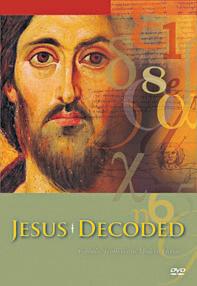
The site also has production information on the "Jesus Decoded" DVD which can be ordered through discovery. The program, shot on location in Israel, Turkey and Italy, includes interviews with international scholars versed in art, history and Scripture who "help separate Catholic truth from popular fiction."
"Many of my students and myself included enjoy a good, fastpaced novel, and enjoyed 'The Da Vinci Code' on that level, as a tall tale of adventure," said Alan Schreck, chairman of the theology department at the Franciscan University of Steubenville in Ohio, who contributed an essay
to the Web site on early church ecumenical councils.
"There's a level where this book is appealing to people," Schreck told CNS. "That is what makes it dangerous to someone, if they believe it's a historical representation or an accurate theological presentation."
Rather than cover up the truth about Jesus, as the novel suggests, the early church councils tried to uncover the truth, according to Schreck. In those councils, the participants "asked critical questions and had entertained different views of who Jesus was, his mission, and in this process saw the need to clarify the truth about Jesus that sprung from the most authentic and reliable sources about him," Schreck said. "And there were many sources about him that were being promulgated."
Several other Da Vinci Code materials can be ordered through The Record and discovery.

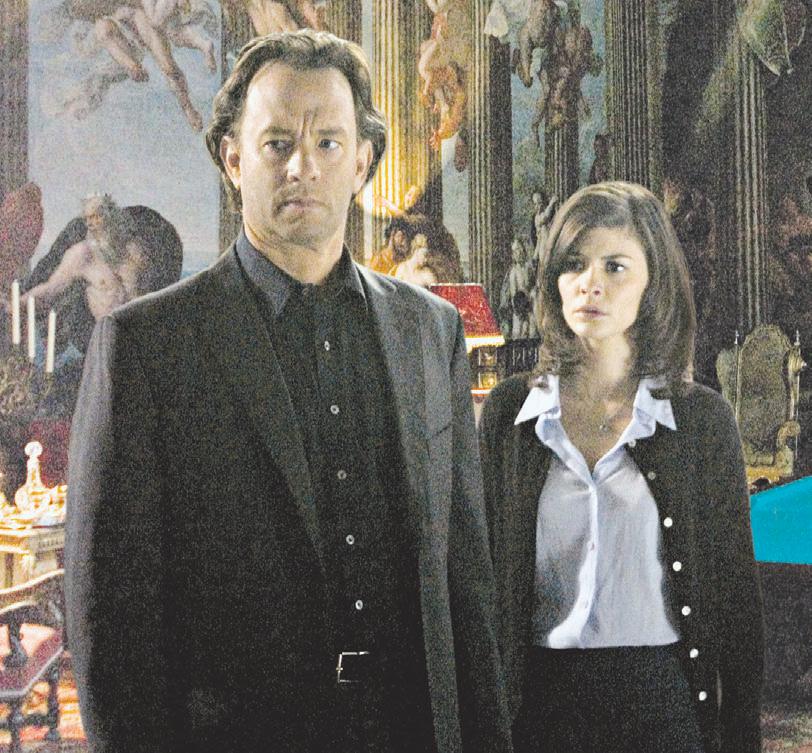
Jesus, Mary Magdalene and their descendants - is misrepresented in the book in a quite significant way.
“The real Da Vinci was a devout Christian,” she says. “He worked in the context of his Christian faith.
“This fact is glossed over in the book,” she says.
Dr Challis says she emphasises to her audiences at public lectures that Da Vinci was a man who never simply believed what he was told, but sought out the truth through experiment, dissection and research.
She believes that this holds an instructive example for people when they come to read the Da Vinci Code - don’t simply believe what the book says, but check out the facts.
Another fact she has noticed from her lecture tours is that many people have become extraordinarily engrossed in the book’s ideas.
Entire families have turned up at her lectures, with every member having read the book. Family discussions about the Da Vinci Code have replaced watching television, in some cases.
A frequent question Dr Challis puts to audiences is “what has
Some suggested links:
this book meant to you?” While this question typically draws many different answers, she is struck by one frequent response in particular.
This is a feeling, expressed by many people, that they are disconnected from the Church. For this reason, they are attracted to the book’s “human aspects,” involving the idea that Jesus had a family, a lover and a child.
Many people seem to find this a “sympathetic and empowering” idea. Unfortunately, it is also an idea which is “totally fanciful” from an historical point of view, she says.
As an historian, Dr Challis emphasises that our knowledge of history depends on what is contained in documents from the past.
Based on this premise, there is no reason for taking seriously the historical claims made in The Da Vinci Code, she says.
Discussion about the past, such as the discussion engendered by the book, is a good thing, Dr Challis believes. But a clear line must be drawn between what is known about history, from its documents, and mere speculation.
- Challis lecture details opposite
For information about the Catholic Church in Australia, including a section entitled “Who is Jesus?” go to www.catholicaustralia.com.au
For information relating to the Da Vinci Code and Catholic Church teachings go to www.jesusdecoded.com
For information on Mary Magdalene go to www.life4seekers.co.uk/ TheDaVinciCode-resources.htm
For information on Opus Dei go to www.opusdei.org.au
discovery May 2006 Page 10
Dr Kate Challis
Actors Tom Hanks and Audrey Tautou star in the film The Da Vinci Code, directed by Ron Howard. Photo: CNS/Columbia Pictures
in conjunction with The University of Notre Dame Australia
De Coding The Art Of Da Vinci
Thursday May, pm
University of Notre Dame Drill Hall
Mouat St, Fremantle
lecture by acclaimed Rennaissance art expert Dr Kate Challis

W- only WA appearance
hen art historian Dr Kate Challis read the Da Vinci Code she said “author Dan Brown is extraordinarily skilled at blurring the lines between fact and fiction. In many ways, I think that the book is great, because it has aroused so much curiosity. On the other hand, I find it worrying that a lot of people simply chose to believe it lock, stock and barrel.”
Dr Challis spent more than 10 years conducting extensive research on Renaissance art and has lectured extensively in Australia, as well as the US and Europe. She will share her knowledge when she discusses The Da Vinci Code and its suppositions at a public lecture on Thursday 25 May 2006 at the University of Notre Dame Australia.
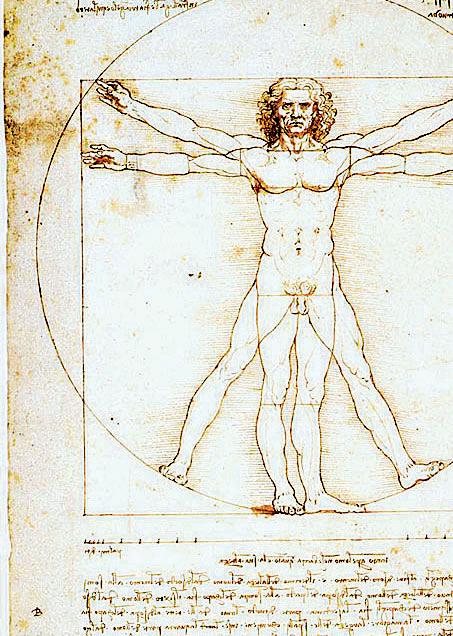
For her doctoral thesis she conducted research in some of the greatest libraries and art galleries throughout the world, including the Vatican. Her interest in art history was fostered at an early age by her grandfather, Professor Emeritus Bernard Smith, Australia’s pre-eminent art historian. Their shared passion for art and ideas still gives them lots to discuss and argue about, including The Da Vinci Code.
In a public presentation no art or literature lover could resist, Dr Challis answers many of the Da Vinci Code questions:
● Is it a woman in the Last Supper?
● Why didn’t Leonardo include a chalice?
● Who is the Mona Lisa and why is she smiling?
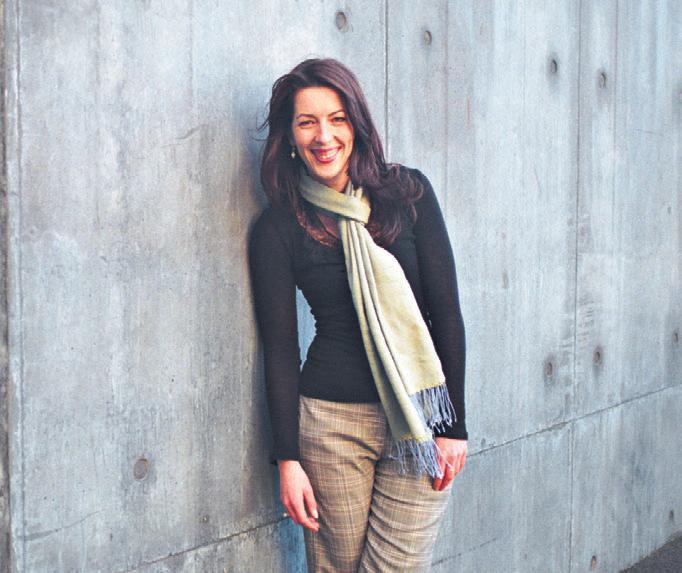
● What are some of the codes Dan Brown leaves for the reader to decode?
● Was Leonardo the grand master of the Priory of Sion?
● Was he involved with the cult of the sacred feminine? Kate has delivered this paper to packed audiences across Australia. It’s an experience that shouldn’t be missed.
discovery May 2006 Page 11 A Record SPECIAL
event
PLUS: Richard Vella - ‘Demystifying Opus Dei’ Richard Vella is a Sydney-based spokesman for the personal prelature of Opus Dei Tickets available ONLY from The Record Ph: () Seating limited - Purchase yours now!

In 1990, Pope John Paul II issued his World Day of Peace Message - Peace with God: Peace with all of Creation. The Holy Father announced, “There is a growing awareness that world peace is threatened not only by the arms race, regional conflicts, and continued injustice among peoples and nations, but also by a lack of due respect for nature. Moreover, a new ecological awareness is beginning to emerge which, rather than

being downplayed, ought to be encouraged to develop into concrete programs and initiatives.”
Since its inception, the Church has instructed us on the proper dominion and stewardship of Creation. This wisdom is made known to us through sacred Scripture, the living Tradition of the Church, the message of Creation, and the voice of conscience enlightened by God’s law.








The Catholic approach to environmental justice is based on the two commandments of Jesus Christ: to love God above all things and to love our neighbours as ourselves. Love of God requires respect for God’s gifts and for God’s will for Creation.
Love of neighbour requires justice, which prohibits the selfish destruction of the environment without regard for those in need today or for the needs of future generations.
DID YOU KNOW?
The numbat is WA’s mammal emblem, a fact which may have saved the species from extinction. Only a few years ago numbats were critically endangered, but CALM researchers have established new populations and given greater protection to existing populations by baiting for foxes. Numbats are active during the day, and in the few areas where they are found, these delightful creatures are now seen more often.
Lazy Person’s Compost
Ingredients
■ Green garden waste: grass clippings and weeds.
■ Brown garden waste: leaves, small brush and twigs.
■ Worms.
Directions
■ In a heap, layer your garden waste as it accumulates. For faster composting, chip it up first. Add worms to help break the waste down.
■ Water so compost is kept as moist as a wrung-out sponge.
■ In a year to 18 months, the material at the bottom and centre of the pile will be dark, crumbly compost. Sift, and use the uncomposted material to start a new batch.
Composting is a great way to recycle garden waste and restore goodness to the soil. It is one thing you can do to help care for God’s earth.

Some other Numbat facts:
Unlike most other Australian marsupials, numbats are active during the day. They feed on termites, consuming up to 20,000 per day, the equivalent of ten per cent of their body weight. These marsupials dig up the insects’ galleries in the soil of the forest floor and lick up the occupants with their long, thin tongues. They shelter in hollow logs that are too narrow for most of their predators to enter. If an enemy invades, numbats can use their rumps, which have extremely thick skin, to plug the hollow.
In summer, before the breeding season, male numbats roam a long way from their home range in search of females. Four young are usually born between January and March and stay attached to the teats until they grow fur. When furred, but still unweaned, they are placed in a small underground chamber lined with grass and leaves, at the end of a one to two metre long burrow, while their mother hunts for termites. They are quite active and will play near the nest during her absence. They are able to fend for themselves by October and disperse by the end of the year.
The best places to see wild numbats are at Dryandra Woodland, near Narrogin, and at Perup Forest near Manjimup.
Last Laugh Last
Q: What do you get if Batman and Robin get smashed by a steam roller?
A: Flatman and ribbon.
Q: When is a car not a car?
A: When it turns into a garage.
Q: How much do pirates pay for their earrings?
A: a Buccaneer!
Q: Why did the scientist install a knocker on his door?
A: He wanted to win the No-bell prize.
discovery May 2006 Page 12
can help: - married couples experiencing fertility difficulties or miscarriages - women with menstrual or other women’s health problems - couples wanting to learn about their fertility and plan their families naturally For a confidential discussion contact Dr Amanda Lamont 9388 1334 8/10 McCourt Street, West Leederville The Australian Centre for FertilityCare and NaProTECHNOLOGY www.fertilitycare.com.au
We
FERTILITY CARE
Hairs all you need to know Hairs all you need to know
Do you know what makes a mammal a mammal?
One of the things is hair.
Its anatomy is closely related to fingernails, snake scales, and feathers because all are made of keratin. Hair does a number of things for mammals. It protects the skin from sun and abrasion, sends sensory messages to the brain, and provides insulation from cold and heat. The shape of hair also gives a mammal a unique look with its different shapes; round hairs tend to be straight; oval or flattened hairs are curly.
Hair Types
Not all hair is the same. If you have a dog or cat at home, take a close look and see if you can find these different types of hair.
■ Guard hairs - are the ones most obvious to see. They are protective or “guard” outer hairs of
a mammal’s coat. They are typically firm and glossy. Some hairs grow to a particular length and stop; others grow continually, like human head hair, horse manes, and quills of a porcupine.
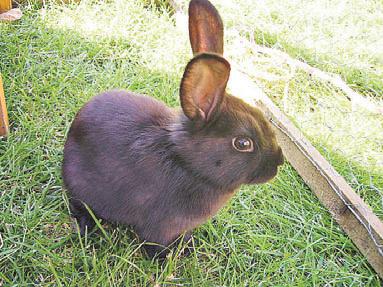
■ Vibrissae or whiskers - stiff hairs, usually long, with many nerves at their base. They are extremely sensitive to touch. These hairs give the mammal clues about its immediate surroundings. Facial whiskers are most familiar, but they also appear in other places on a
Mary, Mother of the New Creation, pray for us, your children, now and always! Be with us together with your Son, Jesus Christ, who wishes to be for us the Way, and the Truth, and the Life.
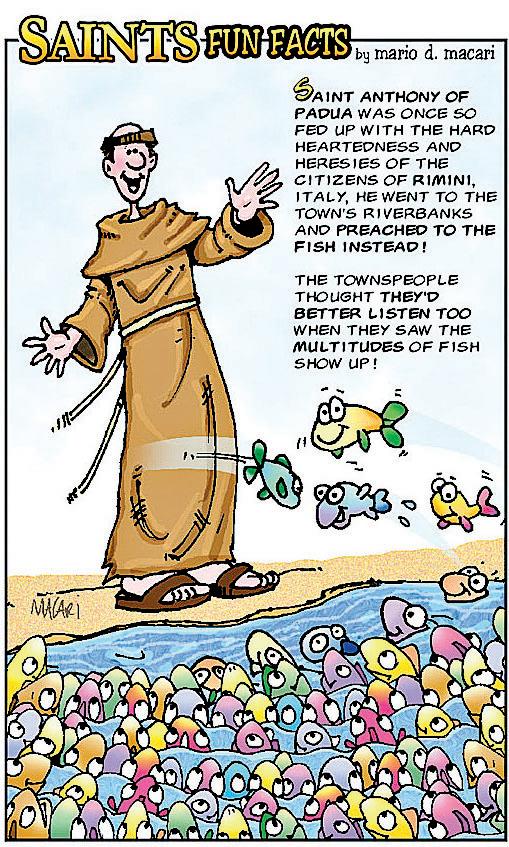
mammal’s body such as on the ankles of a squirrel or the rump of some crevice-roosting bats.
■ Underhairs - these hairs are short, curly, wooly, and are called down or fuzz. Insulation is the most important role of these hairs. Special glands secrete oil to waterproof the skin and hair. Deer have hollow hairs in winter, which provide warmth and buoyancy for swimming.
Coats of Colour
Pigments in the inner layers of hair filter harmful ultraviolet radiation just like sunscreen, and may help regulate body temperature. Dark hairs absorb heat, warming an animal, while light colours reflect sun, keeping an animal cooler.
Hair colour helps camouflage animals from predators or prey, by

matching the environment they live in. Some northern animals like the snowshoe hare, alternate between brown and white as the seasons change in order to be concealed against their surroundings.
Patterns in the hair or fur also help protect mammals. Think of a fawn’s spots which help hide it from predators.
Colour can also provide a warning, like a skunk’s stripe which announces the presence of an
especially good and stinky defence system.
The under-colour of a white-tailed deer’s tail serves as a flag to warn other deer of danger. Hair can also communicate social information about a mammal’s state of mind, such as the erect hair on the back of a wolf or dog which indicates that it feels threatened or is ready to attack. And, in the case of the porcupine and its quills, hair can provide protection from predators.

Over
Since 1998 the little catechism “I Believe” has served religious, catechists, families and young adults as an aid to learning and teaching the Faith.
This new edition, revised in collaborationwith the Vatican’s Congregation of the Clergy, is a great help for all those who want to better understand the basics of the Catholic Faith and who are looking for a clear guide for their journey with and towards God.
The new edition follows still more clearly the structure of the Catechism of the Catholic Church, with numerous references to it.
3 million copies distributed worldwide
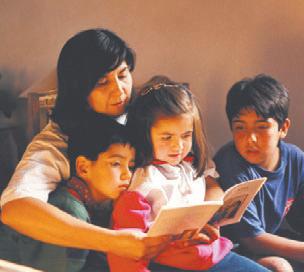
The language of the text is simple and accessible to all.
The first part of the book is based upon the Apostles Creed.
Each article of the Creed is explained in a separate chapter and beautifully illustrated with examples from the Bible. The second part is devoted to the Sacraments, the life of Jesus, prayer in the Christian life and an explanation of the Lord’s Prayer.
Beautifully illustrated throughout
Just $10.00 a copy
A beautiful hand made olive wood rosary made by needy Christian families in Bethlehem will be sent to all those who give an additional charity donation of $12 or more to help support the Christians in the Holy Land*. Please tick the box below if you would like to receive the Rosary from the Holy Land.

discovery May 2006 Page 13 0 0 0 0 0 0000 0000 0000 0000
Nurturing the Faith

NEW from

ST PAULS PUBLICATIONS
COMPENDIUM OF THE CATECHISM OF THE CATHOLIC CHURCH
‘A faithful and sure synthesis of the Catechism of the Catholic Church. It contains, in concise form, all the essential and fundamental elements of the Church’s faith.’
Pope Benedict XVI
Don’t believe everything you read

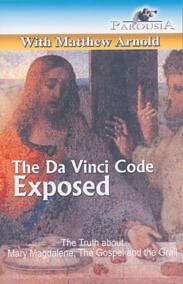


Great reading, great listening, to help you sort fact from fiction
Here are the answers you’ve been looking for. The ones your family, friends, and co-workers have been asking you about. And they’re all available from The Record. Phone (08) 9227 7080 or email: cathrec@iinet.net.au
Decoding Da Vinci by Amy Wellborn $20+postage
The Da Vinci Code Exposed
3CD set by Matthew Arnold $25.50+ postage
The Da Vinci Deception
Key Features:
• Close reliance on the Catechism
• A question-answer format
• Teaches through words and colourful artistic images
Hardcover 220 x 160mm 208 pages ISBN 1 921032 13 8 $24.95
Paperback 215 x 152mm 208 pages ISBN 1 921032 12 X $17.95
DEUS CARITAS EST
Pope Benedict XVI’s first encyclical letter is devoted to the theme of love, which is at the heart of Christian Faith. The letter reflects firstly on the origin and different manifestations of love, and then addresses the way in which the Church is called to live the commandment of love.
Paperback 115 x 182mm 72 pages ISBN 1 921032 04 9 $5.95

ST PAUL SUNDAY MISSAL 2006
• Contains the Order of Mass, including all Eucharistic Prayers, and
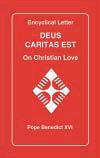
• All the Scripture readings and prayers for each Sunday of 2006, in sequence
• The complete Easter Liturgy for 2006 (Holy Thursday, Good Friday, Easter Vigil)
• A treasury of prayers
ISBN 1 921032 01 4 384 pages $14.95
ST PAULS PUBLICATIONS
PO Box 906 Strath eld NSW 2135

Tel 02 9746 2288 - Fax 02 9746 1140 - Email: marketing@stpauls.com.au
For online orders and catalogue visit our website: www.stpauls.com.au
100 questions and answers about the facts and fiction of The Da Vinci Code $20+ postage
The Incredible Da Vinci Code by Frank Mobbs $15+postage
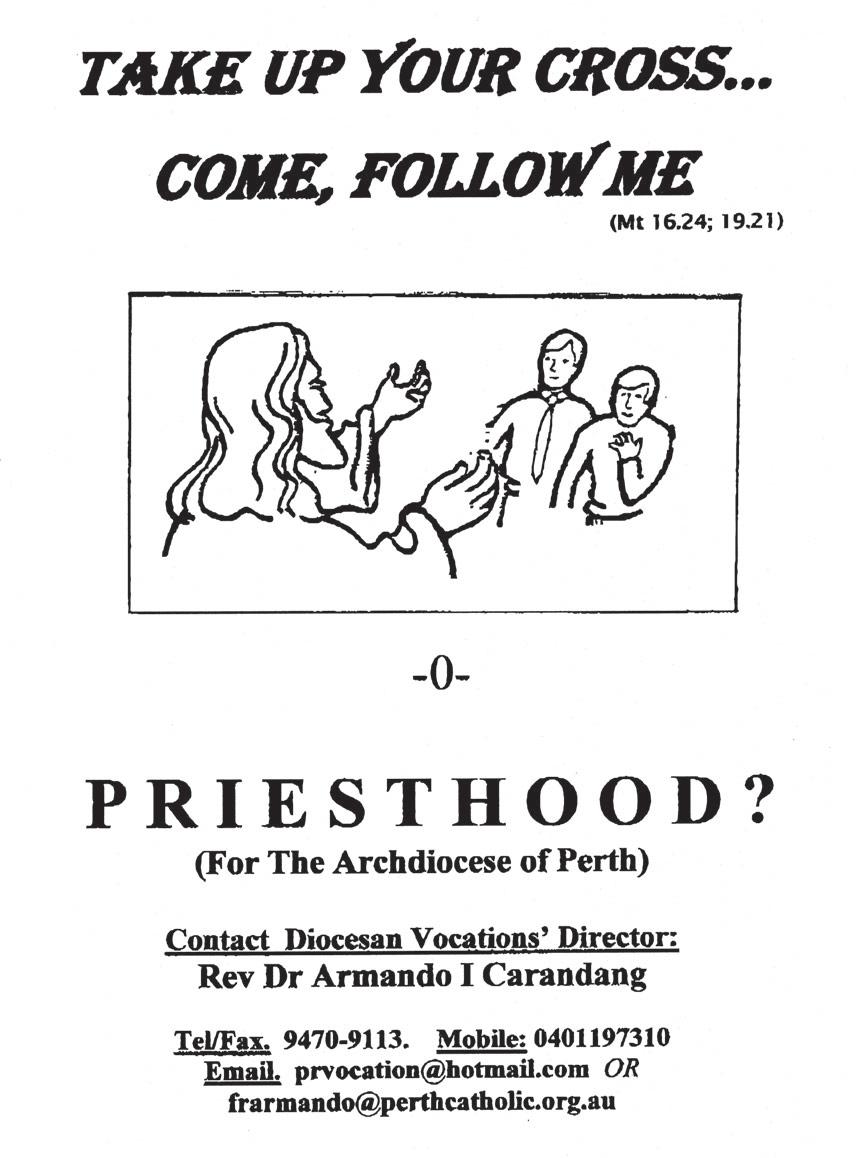
discovery May 2006 Page 14
Web operated is the way to go...
■ By Terence Boylen
Recently the rumour of a Google Operating System (GoogleOS) threatened to topple Windows world dominance. While those rumours were unfounded the first internet operating systems are working their way into the public realm and herald a new era of computing.
WebOSs and web applications are a move away from conventional applications, to the world of providing software as a service.
Instead of forking over hundreds of dollars for the newest version of Office or Windows, people will pay for a year’s access, or pay each time they run the program. It would be comparable to current mobile phone plans.
A WebOS is an application environment that is platform independent and runs inside a browser window. While this may sound like a trick of javascript, java or the like, it is actually much more. WebOSs manage many of the tasks of conventional operating systems such as memory management and optimisation, and multitasking.
Internet applications have only recently become possible with emerging technologies such as Asynchronous JavaScript and XML, or AJAX. AJAX technology is a way of interacting with websites which does not require full refreshes of the website on change. Instead, only a small portion of information is transferred back and forth and the website is updated in real-time. The end result is a site that can be interacted with and a usable way of interoperating with remote servers.
Already websites are arriving which demonstrate such technologies. One of the first was AjaxWrite (www.ajaxwrite.com but try also www.ajaxsketch.com). This is a functional, free word processor which runs inside a web browser.
In Brief
Social sites a “black hole”
Online social networks such as MySpace and Facebook are a “virtual mosh pit” leading millions of teenagers to waste massive amounts of time, says a Washington dad in Time magazine’s cover story this week. Michael Duffy says he has tried to restrict internet use by his own 15-year-old son, who is a Facebook fan, but suspects he is failing. “Facebook is one giant time vortex - a black hole of chatter - and for many kids it’s
While currently it can’t handle mail merges or advanced footnoting, it typifies the mode many businesses will operate in the future. One day, Word will no longer need to be installed on every machine in the company, but will be accessible to any user with a browser.
This not only simplifies life for the end users, but also application developers. For example, an office suite may run off a company’s servers allowing a limited or unlimited number of connections. Or, companies could buy an access to the servers of the company, meaning updates are available as soon as they are written.
WebOSs compliement internet applications. Projects such as YouOS, Orca, Fold and Xin showcase some of the possibilities that WebOSs provide. At the moment these provide limited functionality, with some standard basic applications but also provide options for installing or adding applications.
Fold (http://beta.fold.com)
Fold, the OS created by Axel Wolf, presents beautiful eye candy when first opened. It has an analogue clock displaying the time, a sticky notes application which allows saves to the server, RSS feeds, a weather application and a status monitor - there is even a calendar.
Fold can be extended via html and flash containers. These allow users to add content of their own or from third parties. Whilst it is simplistic, the expectation would be eventually to provide an in-OS installer, with third parties developing for the OS via application programming interfaces. A nice feature is that it remembers your desktop between logins.
YouOS (www.youos.com)
In comparison, YouOS is not a particularly attractive desktop. However, what YouOS lacks in style, it makes up in features. When
hard to find an exit,” writes Duffy. “Under its influence, 90 minutes of homework ends up taking four to five hours…”
Pill linked to cancer - expert
Cancer expert Sam Epstein has called the birth control pill “the largest unregulated human trial that’s ever been conducted.” Dr Epstein, author of Cancer-Gate: How to Win the Losing Cancer War (2005), is Professor of Environmental and Occupational Medicine at the School of Public Health, University

the interface opens there is already a chat client connected to the public YouOS channel. Also open is the application installer. The interface for YouOS is reminiscent of OS X with a toolbar at the top of the window where applications are started and accessed. YouOS blurs the boundaries between a normal and a WebOS, providing default applications such as an email client, web browser, rich text editor, and even shell access (a command line interface).
EyeOS (www.eyeos.org)
EyeOS is a complex WebOS. Unfortunately, while it best typifies the emerging capability of WebOSs, it also shows the inherent problems. On a 56k connection the interface was a little unresponsive. Accordingly, Internet Explorer
of Illinois at Chicago. He maintains that prevention of cancer has been largely ignored because of vested interests in drugs and other pollutants.
In 2005, the World Health Organisation’s International Agency for Research on Cancer re-classified certain oral contraceptives as carcinogenic to humans with slightly increased risks for cervical, liver and breast cancer.
The agency concluded that more study is needed. (The Canadian Cancer Society is reviewing its position on oral contraceptives. The
warned that scripts would slow down the page. Nevertheless, the applications bundled were excellent. The text editor for example was able to manage rich text as well as tables and formulas. A range of applications were installed, but these were usually run as Java applications. Ideally WebOSs would be independent of such technologies.
Orca (www.orcaa.com)
Based on the source code of EyeOS, Orca is probably the most pleasant experience one could want in a WebOS. Whilst it is slow loading, it is the OS for people used to Windows XP. Don’t worry if you’re not, there are other themes available. There is a large gamut of applications available. These include web applications like msn clients
society plans to make a decision this spring.)
-CBC Marketplace, March 5
Standing up to obesity
Chair-free classrooms could be an answer to childhood obesity, new research suggests. Dr James Levine, a consultant at the Mayo Clinic in Minnesota, led a weeklong study in which pupils aged 10 to 12 spent an average of five hours a day standing, a position that burns up to three times as
and browsers, a huge number of games. With high bandwidth, this could be, even at this early stage, a usable remote desktop for any user.
The rapid pace of development and level of maturity seem to indicate WebOS have a dedicated audience. There are inherent problems in designing these operating systems which will need to be overcome though. Bandwidth and the lack of a standard development environment will hold back the uptake of these OSs. Whilst Java solutions exist, they are not ideal.
In recent years the thin-client market is diminished and there is room for a similar solution. If the polish of Orca is anything to go by, WebOSs have a rosy future on the web.
many calories as when you are sitting down. They used “lean and move” bays where they worked on laptop computers, white boards and vertical screens. Cushions on the floor were provided, but only for short breaks.
“In this environment children are more active and engaged,” Dr Levine said. “There was no compulsion to be active; the idea is to make standing and moving the coolest thing to do.” The experiment had a “significant” long-term effect on the children’s waistlines, the study found. -London Telegraph, March 25
discovery May 2006 Page 15 technology
The Fold webOS desktop experience. Try it out for yourself at http://beta.fold.com Graphic: Terence Boylen
*New Course
Preventive Health
This new degree focuses on the understanding of health in the context of society and the ways in which we can protect and promote health for people and communities. While the importance of medicine in treating disease is recognised, we also understand that the health of individuals and communities is influenced not only by human biology but also individual, economic, social, geographic, cultural, political and environmental circumstances.
This social view of health provides a lens through which the dynamics that impact on people’s health can be explored and provides a basis for developing strategies and actions to empower individuals and communities to take control over their own health.
However, inequities in health status in certain groups within the community persist. Traditional ‘health promotion’ appears to have failed to address how the social determinants of health impact on the health of individuals and communities or adequately target the groups and individuals most at risk.
This degree is designed to provide students with the knowledge and skills required to work effectively with individuals and communities to enable them to successfully undertake health enhancing behaviours while addressing the underlying psychological influences and social constructs that may be barriers to change. The program is multi-disciplinary encompassing areas such as psychology, behavioural science, counselling, sociology, marketing, media communication and analysis skills. The degree will prepare students for employment in the increasingly complex context of public and community health.
Preventive health will be presented at our next course information evening for Health Sciences, Medicine & Nursing on Tuesday 30 May,Drill Hall (follow the signs on Mouat Street),6-8pm
Mid year applicationsare now open
For more informationplease contact our admissions staff on 9433 0535 or www.nd.edu.au for an application pack
2006 UNDA Schedule of Events

WHEN: Friday 14 July, 9.00am - 1.00pm
WHERE: Prindiville Hall, (follow the signs on Mouat Street)
COST: FREE
Notre Dame holds this event to provide prospective students in years 10, 11 & 12 with an opportunity to experience life on campus as a university student.
Students register and ‘enrol’ much like university students, hear from current students about the transition from school to university and sit through two ‘mini-lectures’ in areas they are interested in. Some lectures that have been offered in the past include
• Multiple Intelligences
• What is Native Title and Why Do We Need It?
• History, Politics & Social Concern
• Ready, Set, Go!
• Ethical Leadership & Making Teams Work
• How to do Marketing
• Accounting & Finance
• Delivery of Intravenous Maintenance Fluids
• Assessment of Normal Posture
• True Love in the Digital Wilderness
This is a fun day out during the July school holidays that has proven useful to all students hoping to pursue study beyond high school. Get a group together and book your place now by contacting the Prospective Student Centre on 9433
discovery May 2006 Page 16
10, 11 & 12s!! “A Day in the Life of a University Student”
Calling all...Year
0533
1800 640 500 future@nd.edu.au www.nd.edu.au
FREECALL
COURSE INFORMATION EVENINGSDATE VENUE Health (Incl Broome Campus) 30 May, 6-8pmDrill Hall Cnr Croke & Mouat St Fremantle Arts/Sciences 13 June, 6-8pmFoley Hall 19 Mouat St Fremantle Business/Law 27 June, 6-8pmDrill Hall Cnr Croke & Mouat St Fremantle Philosophy,Theology & Ethics 4 July, 6-8pmMain Lecture Theatre 19 Mouat St Fremantle Postgraduate (ALL program areas incl Medicine) 7 Nov, 6-8pmMedicine Lecture Theatre, 45 Henry St Fremantle Broome 28 Nov, 6-8pmFoley Hall 19 Mouat St Fremantle Medicine 5 Dec, 6-8pmMedicine Lecture Theatre, 45 Henry St Fremantle EVENTSDATE VENUE UNDA - A Day In The Life of a University Student 14 July, 9am-2pmPrindiville Hall 19 Mouat St Fremantle UNDA OPENDAY 13 Aug, 10am-4pm19 Mouat St Fremantle UNDA - Admissions Information & Courses Expo 5 Sept, 6-8pmFoley Hall 19 Mouat St Fremantle




















 ■ By Sylvia Defendi
■ By Sylvia Defendi




 ■ By Mark Reidy
■ By Mark Reidy














 ■ By Derek Boylen
■ By Derek Boylen


 The hand of Fr Luis Ruiz, right, cradles the stumps of a leper’s hands. The 92-year-old Spanish Jesuit has dedicated a lifetime to serving the poor and disadvantaged in Macau and China through the work of his social services organisation, Casa Ricci.
Photos: Derek Boylen and Jamie O’Brien
Fr Luis Ruiz SJ
The hand of Fr Luis Ruiz, right, cradles the stumps of a leper’s hands. The 92-year-old Spanish Jesuit has dedicated a lifetime to serving the poor and disadvantaged in Macau and China through the work of his social services organisation, Casa Ricci.
Photos: Derek Boylen and Jamie O’Brien
Fr Luis Ruiz SJ







 ■ By Paul Gray, Melbourne
■ By Paul Gray, Melbourne



























